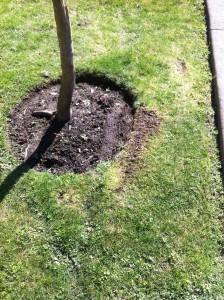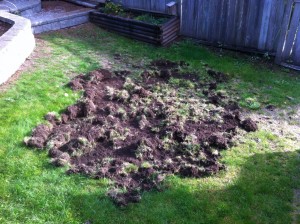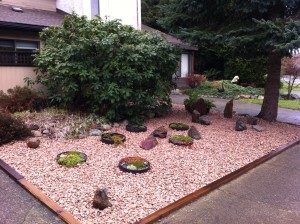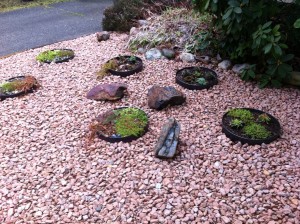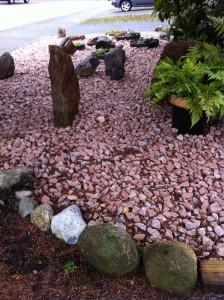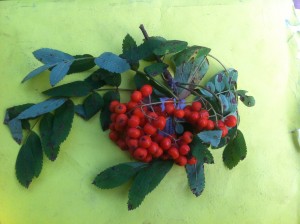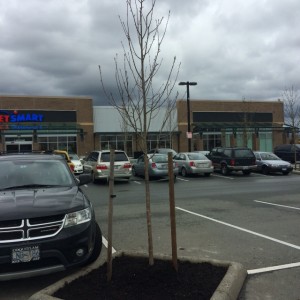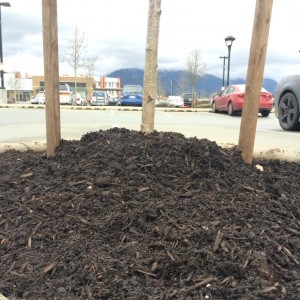Spring is finally here – a bit early this year – the grass is shaggy and mowers are coming out. Strata members wonder when the lawns will get mowed Properly. So we send our workers out and, inevitably, blogs are born! Consider the mistakes that were made in the field today.
How many problems can you list?
- Mowers don’t belong in tree wells, period! Go around the tree well instead of forcing the mower into a narrow spot. Line trimmers were designed to hit tight spots, so use them. This is a horrific way of saving time.
- Scalping is a huge, HUGE, problem. The brown zone in the photo has been scalped and will require repair; most likely over seeding. Seed is expensive and extra time will be required for repairs. Remember: grass grows from meristems located about a third of the way up a blade of grass. Grass blades don’t regrow from underground roots, they grow from meristems. This is why a scalped area will likely stay bare unless we over seed.
- Soil compaction is another problem. The tree well is there to channel water and nutrients into the root zone. Weekly soil compaction with mower wheels will make it difficult for fine roots near the surface to move through the soil; water will also most likely pool up and run off instead of penetrating into the soil.
- The mower destroys the ninety degree tree well edge we so diligently established in winter.
- The wheel marks are unsightly.
- The tree well also exists to eliminate tree v. machine conflicts. The most likely outcome of any collision is bark destruction. Open wounds invite pathogens which the tree has to fight by compartmentalization and that uses up precious energy reserves, thus reducing health and growth. Wounds also affect xylem cells which means water transport is temporarily interrupted thus compromising function and growth. Collisions with machines also cause stress and reduce growth. If the tree dies and has to be replaced we face direct replacement costs and loss of ecosystem services.
Summary: Never run your mowers through tree wells. Navigate around the edges carefully.


